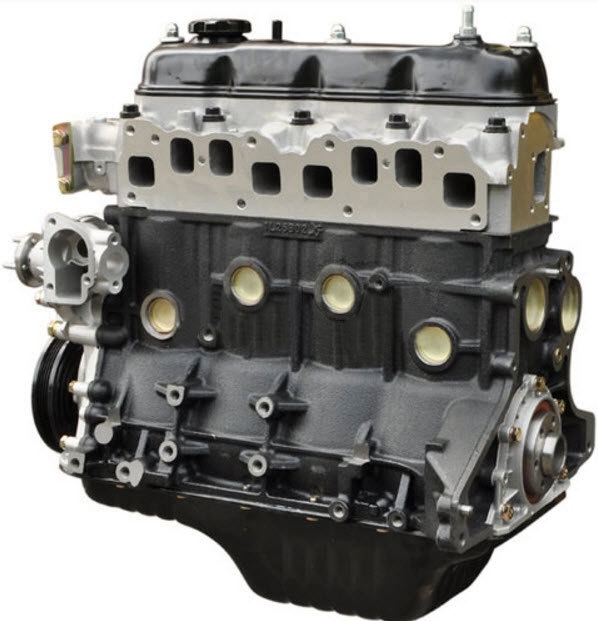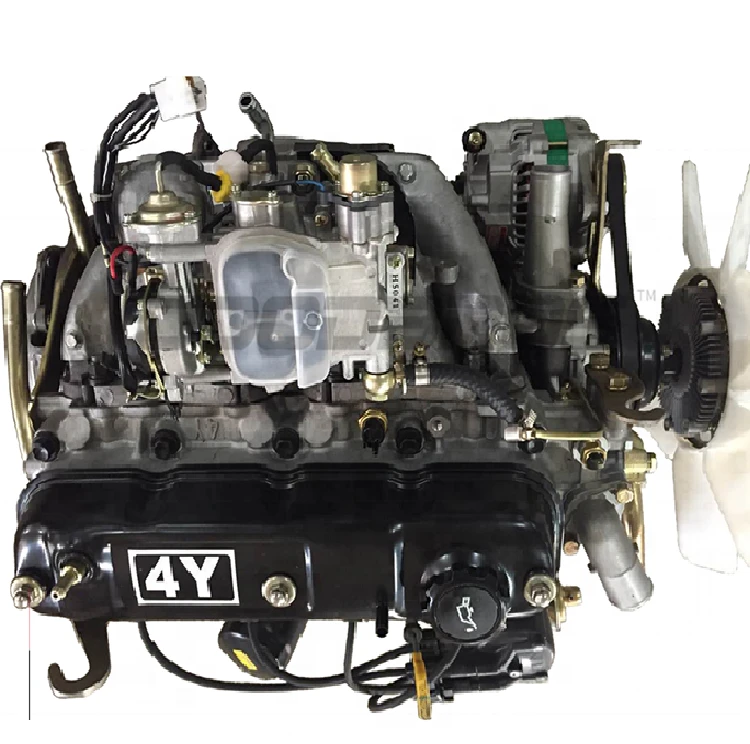The History and Evolution of the 4Y Engine in Automotive Engineering
The History and Evolution of the 4Y Engine in Automotive Engineering
Blog Article
Why the Engine Is the very best Choice for Efficiency and Efficiency in Your Automobile
The engine stays an essential component in auto layout, primarily due to its substantial impact on both efficiency and performance. As advancements in technology allow smaller engines to provide exceptional power while maximizing gas economic situation, the integration of features such as turbocharging and hybrid systems becomes progressively important.
Comprehending Engine Types
Comprehending the various kinds of engines is crucial for enhancing efficiency and performance in auto layout. The key engine kinds consist of interior combustion engines (ICE), electrical engines, and crossbreed systems, each offering distinctive benefits and restrictions.
Interior combustion engines, which can be further classified right into gas and diesel variations, rely upon the combustion of gas to create power. Gas engines usually offer higher RPMs and better velocity, while diesel engines are known for their torque and gas performance, making them suitable for durable applications.
Electric engines, on the other hand, make use of electrical motors powered by batteries or fuel cells. They offer instant torque delivery, causing smooth velocity and lower exhausts. The effectiveness of electric engines is dramatically greater than that of ICEs, making them a popular selection for eco-conscious customers.
Hybrid systems incorporate both interior combustion and electrical engines, leveraging the strengths of both modern technologies. They enhance gas usage by utilizing electrical power at lower speeds and switching to gas or diesel for higher speeds or larger tons.
Picking the ideal engine type is crucial for accomplishing wanted performance metrics and ecological sustainability in modern auto engineering.
The Effect of Engine Dimension
Engine size regularly plays a critical duty in identifying an auto's performance and effectiveness. Usually measured in liters or cubic centimeters, engine dimension directly influences the power result and torque characteristics of an automobile. Bigger engines generally generate even more horsepower, allowing greater acceleration and greater leading rates. This is particularly helpful in applications requiring durable efficiency, such as sports cars and trucks and heavy-duty trucks.
However, increased engine dimension usually associates with lessened gas effectiveness. Smaller engines can supply ample performance for everyday driving while advertising much better effectiveness, making them a popular choice in mid-size and small vehicles.
In addition, innovations in engine style, such as turbocharging and direct gas injection, permit smaller sized engines to achieve power degrees similar to their bigger equivalents. This trend stresses the value of not solely concentrating on engine size but additionally thinking about total automobile design and modern technology (4y engine). Ultimately, the influence of engine size on efficiency and efficiency emphasizes the demand for consumers to analyze their particular driving choices and needs when picking a vehicle
Advanced Engine Technologies
Innovations in engine innovations have actually significantly reshaped the landscape of vehicle efficiency and efficiency, building upon the foundational principles established by engine dimension. Especially, advancements such as turbocharging and direct fuel injection have actually made it possible for smaller sized engines to deliver power levels previously related to bigger equivalents. Turbochargers press air entering the engine, permitting boosted power outcome without a matching rise in engine dimension, while straight injection optimizes fuel delivery, boosting combustion efficiency.
In addition, variable valve timing systems have become an important modern technology, permitting engines to change shutoff procedure based upon driving problems. This adaptability improves both performance during velocity and gas performance throughout travelling. Hybrid and electric engine innovations additionally show the shift in automobile design, combining traditional internal burning engines with electrical motors to make the most of effectiveness while decreasing discharges.
Additionally, advancements in products scientific research have resulted in lighter, more sturdy engine parts, additionally enhancing efficiency and longevity. The combination of advanced electronics and engine control devices likewise enables real-time changes, making sure ideal efficiency across various problems. Collectively, these innovative engine innovations not only boost car performance however also add to a much more lasting vehicle future, demonstrating the continuous evolution of engine layout.
Balancing Power and Performance
Striking a balance in between power and performance is essential in modern-day vehicle design as makers look for to satisfy significantly strict exhausts policies while pleasing consumer need for efficiency (4y engine). The difficulty exists in optimizing engine attributes to deliver robust power outcome without sacrificing fuel economic situation
To achieve this equilibrium, designers employ different strategies, such as turbocharging, which improves engine power by compeling in more air, permitting a smaller sized engine variation that improves fuel performance. Variable shutoff timing technologies likewise play a substantial role, enabling engines to change their efficiency features based on driving problems, thus boosting both power and efficiency.
Additionally, innovations in products and manufacturing techniques have caused lighter engine parts, which minimize total vehicle weight and improve fuel efficiency without jeopardizing power. Hybrid innovations have actually likewise arised as a sensible option, incorporating typical internal combustion engines with electrical powertrains to offer a boost in performance while maintaining reduced discharges.

Future Patterns in Engine Style

Furthermore, the growth of sophisticated products, such as high-strength alloys and lightweight compounds, is set to reinvent engine elements. These materials not just reduce weight however also enhance thermal performance, consequently maximizing performance. In addition, manufacturers are checking out variable compression proportions, allowing engines to adjust to various driving conditions, boosting both power output and fuel economic situation.
Even more, the surge of artificial intelligence and artificial intelligence in engine style is making it possible for predictive maintenance and real-time efficiency optimization. This technology Recommended Reading can cause engines that self-adjust for optimal efficiency based on driving patterns.

Final Thought
In final thought, the engine offers as a critical part in attaining ideal performance and efficiency in modern vehicles. The interaction in between engine size and design continues to advance, driving technologies that stabilize thrilling performance with environmental sustainability.
Additionally, advancements in engine layout, such as turbocharging and straight fuel shot, permit smaller engines to achieve power degrees similar to their larger equivalents.Advancements in engine innovations have dramatically improved the landscape of automotive efficiency and effectiveness, building upon the fundamental ideas developed by engine dimension. Turbochargers compress air getting in the engine, enabling for increased power result without a matching increase in engine dimension, while direct injection optimizes gas shipment, enhancing combustion performance.
Crossbreed and electric engine modern technologies even more highlight the shift in automotive style, combining standard internal combustion engines with electrical motors to take home full advantage of performance while minimizing emissions.
Collectively, these innovative engine innovations not just improve automobile efficiency however additionally contribute to a much more lasting click here for more automotive future, showing the ongoing development of engine layout. (4y engine)
Report this page